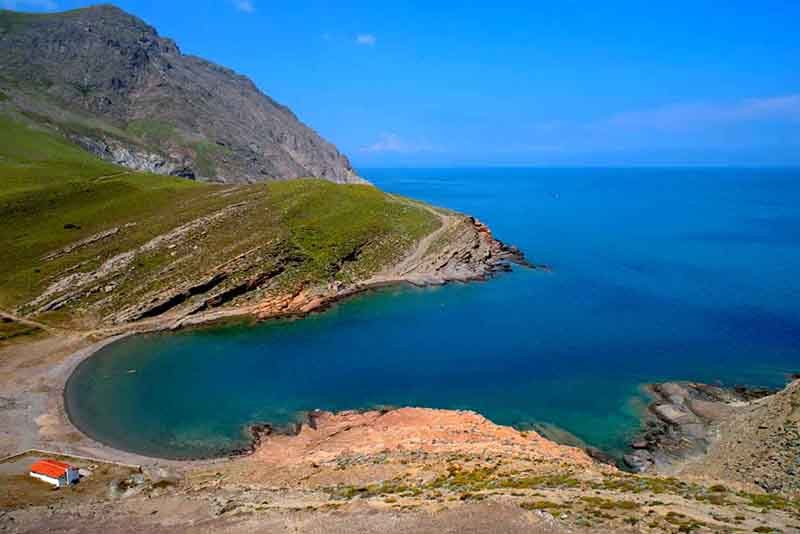Holding the distinction of being Turkey’s largest island, Gökçeada encompasses numerous important historical and natural beauties within its 286 square kilometers of land and a coastline stretching for 95 kilometers. Situated north of the Aegean Sea, Gökçeada has been within the borders of the Republic of Turkey since 1923, belonging to Çanakkale. With its rich history, natural beauty, and several important villages designated as conservation areas, the island has recently been attracting an influx of tourists. Imbros, as it is also known, offers various activities, particularly in the summer, due to its untouched nature, making it a valuable location.
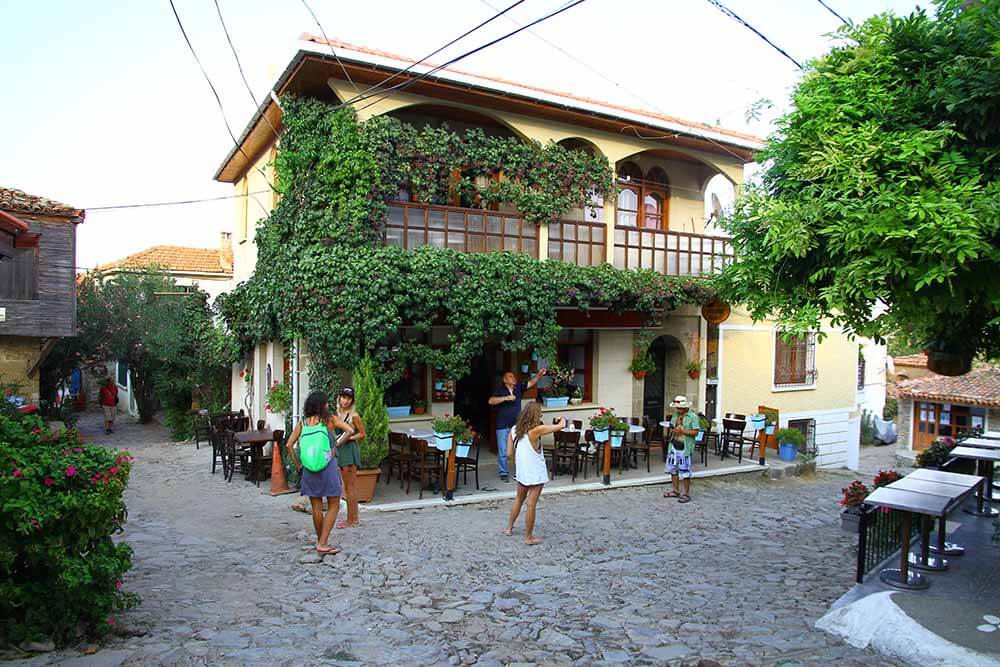
A street view from Zeytinlikoy in Gokceada. Gokceada is the largest island of Turkey and Zeytinlikoy is one of the well protected Greek villages on the island.
History of Gökçeada
When examining the history of Gökçeada, we can see that the region has a very ancient past and changed hands many times. It is estimated that the earliest settlements on the island date back to the Pelasgians. In the 5th century BC, Miltiades connected Gökçeada to Athens, and the island was under Athenian rule until the Roman period. Later, in 1455, it was annexed to the Ottoman territories by Fatih Sultan Mehmet, and its old name, Imroz, means “supreme mother goddess.”
The island experienced political changes even after the conquest and was occupied by the Greeks during the Balkan Wars of 1920-1923. During the Gallipoli Campaign of World War I, it was used as a headquarters by the Allies. Finally, on September 22, 1923, with the Treaty of Lausanne, it became part of the Republic of Turkey and has remained within our borders ever since.

Gokceada, old name is called Imbros, Imroz. Is Turkey’s largest island. Located in the Aegean Sea. It is the center of tourism with its historical texture, beaches.
Places to Visit on Gökçeada
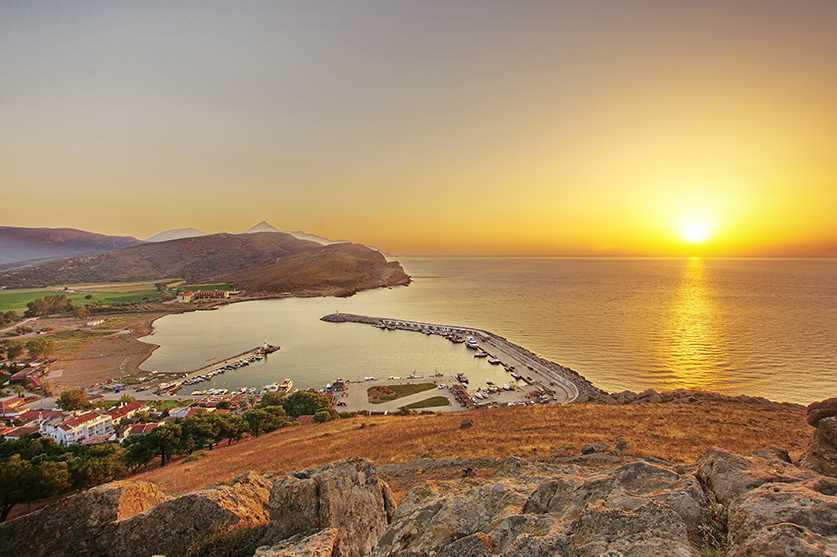
Gökçeada from the top
Gökçeada saw a decrease in its population until the 2010s. It had a cosmopolitan structure with both Greeks and Turks. However, in 2010, the Greek population on the island had decreased to around 300. With its natural beauty and structures that have survived from history to the present, as well as conservation areas, it is a lively island.
Gökçeada, one of Turkey’s eleven “peaceful cities,” is especially known for its historical Greek villages. Among the Greek villages, Kaleköy is divided into lower and upper sections. In ancient times, Greeks often built their houses on higher ground to protect themselves from pirate attacks. Today, Lower Kaleköy, with its entertainment centers, plays a significant role in the island’s summer tourism.
Zeytinli Village, another Greek village, stands out with its natural stone houses. Many of these well-preserved stone houses are open to visitors. Additionally, the village is renowned for its “dibek coffee,” which has gained international recognition. Semadirek Island, offering the most beautiful views, is known as Gökçeada’s balcony. It is particularly suitable for capturing stunning moments during sunset, making it a favorite spot for photography enthusiasts. Tepeköy, located at the highest point of the island and only 10 kilometers away from the district center, is known for its homemade wines. The tavern in Tepeköy is quite popular. Moreover, every year on August 15th, the “Meryem Ana Panayırı” (Feast of the Virgin Mary) is held in Tepeköy for 10 days, attracting many local and foreign tourists.
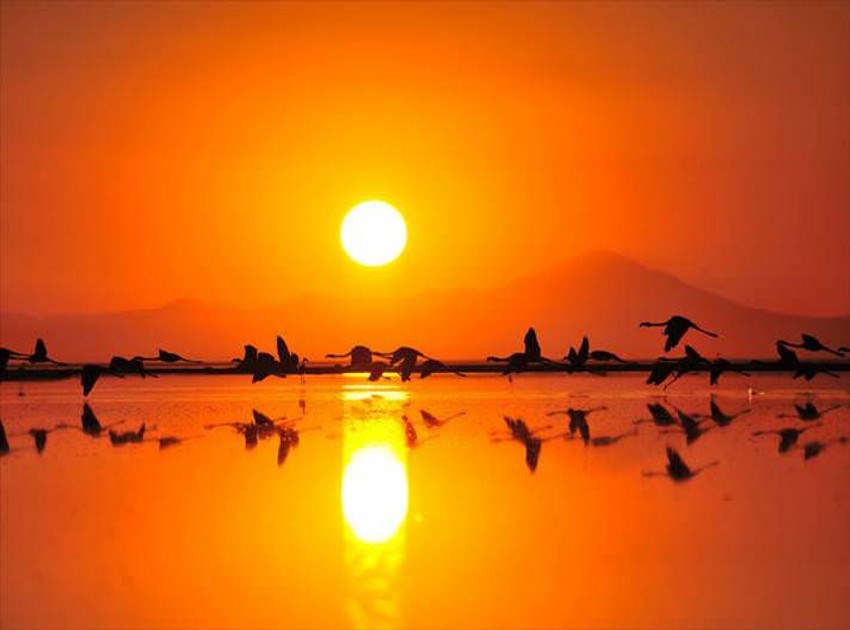
Gökçeada Salt Lake
In Yenimahalle on the island, there are two mosques dating back to the era of Fatih Sultan Mehmet: Merkez Camisi (Central Mosque) and Fatih Camisi (Fatih Mosque). The old Bademli village has been designated as a conservation area, and the centuries-old plane trees and historical laundry facility in the village still bear the traces of that era.
Archaeological excavations are ongoing in the region of rock tombs dating back to the Roman period in the mound area of Bademli village.
Activities
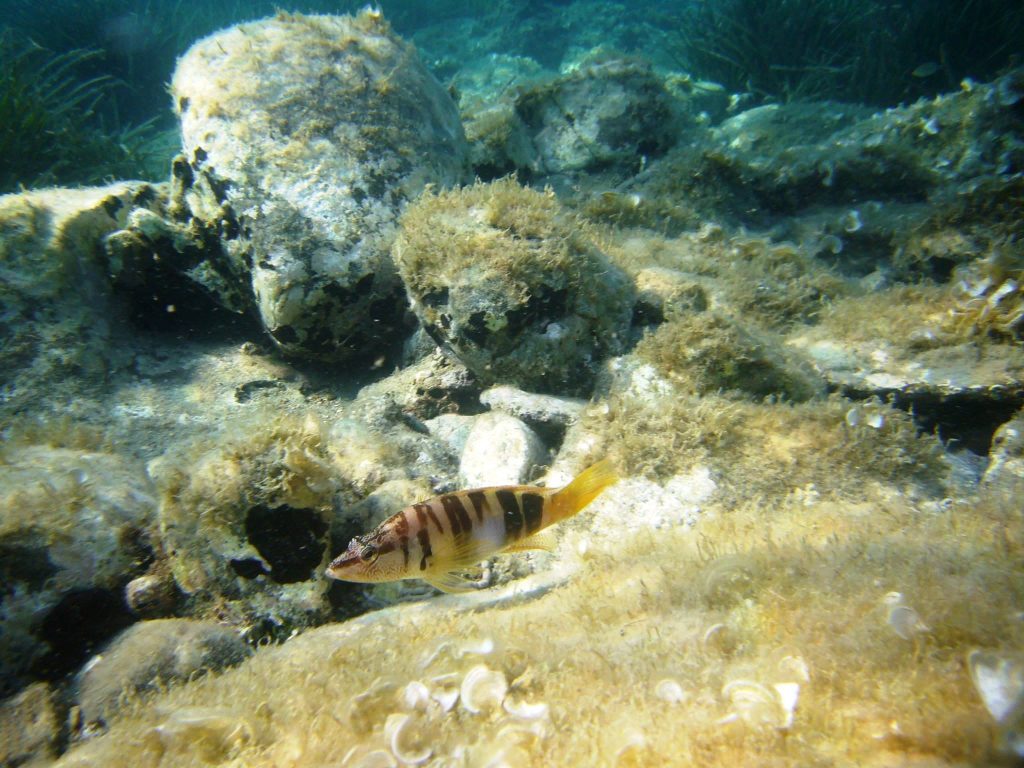
Gökçeada Underwater National Park is worth diving
As mentioned earlier, Gökçeada is home to historical beauties, but it also boasts abundant natural beauty. In particular, you must explore the beach area of Yıldız Koyu, which holds the distinction of being Turkey’s only underwater national park. Positioned between Yıldız Village and Yelken Kayası, the Underwater National Park, dedicated to the Turkish Marine Research Foundation, is a beautiful natural area. Just above Dereköy, there is the Marmaros Waterfall, which stands at a height of 38 meters. Additionally, during the summer tourism season, Eşelek Village and Aydınlı Beach get crowded. Aydınlı Beach is not only great for swimming but also ideal for windsurfing. At Tuz Gölü (Salt Lake), you can take mud baths and make use of its potential for health tourism.

